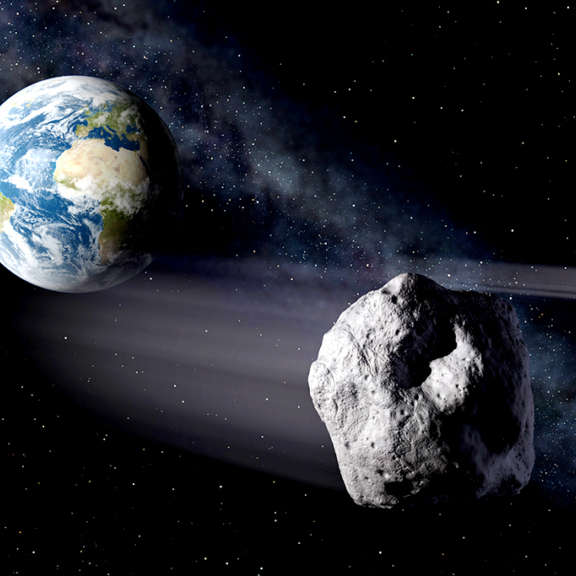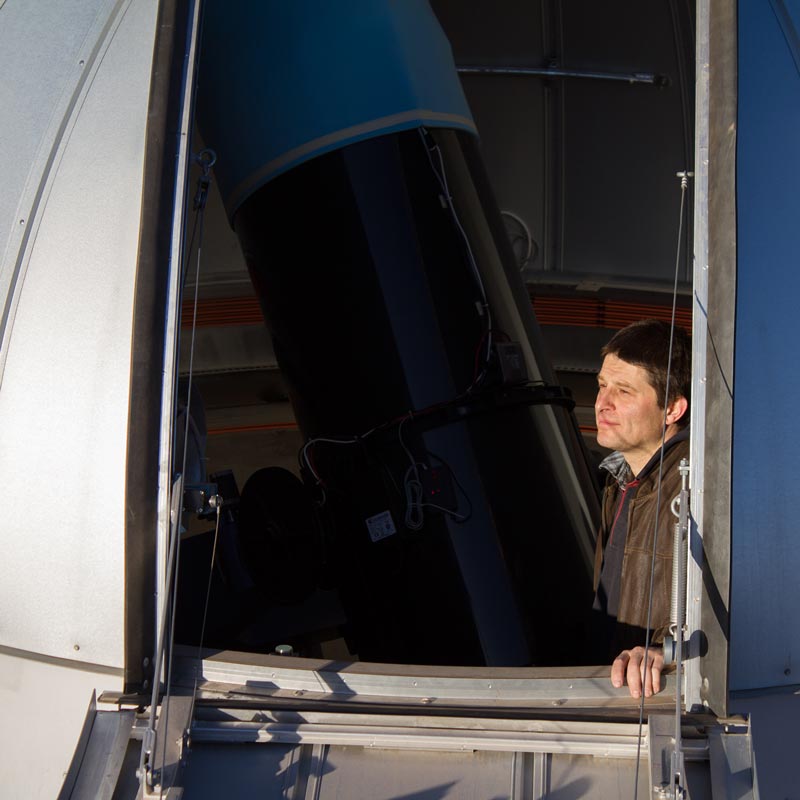Bruce Betts • Jun 26, 2018
Will an asteroid hit Earth? Your questions answered.
Should I be worried about asteroids hitting Earth?
You shouldn’t lose sleep over it. Damaging asteroids do not hit Earth very often. But you should care about it, because dangerous asteroids have struck our planet and will do so again. The solution? We need to find, track, and characterize asteroids, develop deflection methods, and internationally coordinate and educate about the issue.
Defend Earth
How The Planetary Society works to decrease the risk of Earth being hit by an asteroid or comet.
What is an asteroid, exactly?
An asteroid is a small, rocky or metallic object orbiting the Sun. They are usually defined as being larger than 1 meter in diameter; objects smaller than that are called meteoroids. The largest asteroid is Ceres, which has a diameter of 965 kilometers (600 miles). Most asteroids, including Ceres, are located in the asteroid belt between Mars and Jupiter, but some come near to or cross Earth’s orbit. There are several related terms that come up when talking about things hitting Earth, so here are some related definitions:
What is a comet?
A comet is a small, icy, and dusty object orbiting the Sun. Comets formed in the outer Solar System, far away from the Sun where ice is stable. Most of them spend most of their time far beyond the orbit of Neptune, and all spend most of their time beyond Jupiter. But some have orbits that bring them occasionally through the inner Solar System including sometimes past Earth’s orbit. When they are in the inner Solar System, their ice sublimates—that is, it goes from ice to gas—kicking off dust and forming the coma and tails they are famous for.
What is a NEO?
A NEO (near-Earth object) is an asteroid or comet that comes within 50 million kilometers (30 million miles) of Earth’s orbit. They are the objects that represent a possible danger to the Earth. NEOs consist of NEAs (near-Earth asteroids) and NECs (near-Earth comets). There are far more NEAs than NECs; according to NASA as of 2022, more than 30,000 NEAs have been discovered, compared to just over 100 NECs.
What is a PHA?
A PHA (potentially hazardous asteroid) is a NEA larger than about 140 meters whose orbit can bring it within 7.5 million kilometers (4.5 million miles; 0.05 AU) of Earth’s orbit.
What is a meteoroid?
A meteoroid is a rocky or metallic object in space that is smaller than an asteroid, the boundary usually being defined as 1 meter diameter. Very tiny meteoroids, smaller than 1 gram or so, are often called micrometeoroids or space dust.
What is a meteor?
A meteor is the streak of light that occurs when an object (e.g., an asteroid or meteoroid) hits the Earth’s atmosphere at high speed causing the object to heat up and glow.
What is a meteorite?
If part of a meteoroid, asteroid, or comet makes it to the ground, it is called a meteorite.
How do asteroids form? Where do asteroids come from?
Asteroids are typically material left over from the period of planetary formation 4.5 billion years ago, the stuff left over that didn’t form into planets in the inner Solar System. Often they are fragments of collisions between asteroids in the past.

How many near-Earth asteroids are there?
Using the cut-off for asteroid diameter of 1 meter, there are estimated to be more than half a billion near-Earth asteroids. For objects that cause major damage if they hit Earth (larger than about 30 meters), there are about a million. So far, over 30,000 NEAs have been found. It is easier to find larger objects, so we think we have found more than 90% of the asteroids 1 kilometer and above. But we have only found a small percentage of the smaller asteroids that are still capable of causing major regional damage.
When will the next asteroid hit Earth?
We don’t know. But we can talk about how often objects of different sizes hit Earth on average. The good news is there is a lot more little stuff out there than big stuff.
- 100 tons of space stuff hits the Earth’s atmosphere every day, but most of it is dust-sized particles that burn up as they cause meteors.
- About 30 small asteroids a few meters in size hit Earth every year. They make spectacular fireballs in the atmosphere, and sometimes fragments make it to the surface as meteorites, but they don’t cause any significant damage on the ground.
- An asteroid about 20 meters in diameter — like the one that exploded over Chelyabinsk, Russia in 2013 — will hit once or twice a century, on average. The shock wave of the Chelyabinsk asteroid shattered windows and injured more than 1,000 people.
- An asteroid like the one that exploded near the Tunguska River in Siberia in 1908 impacts on average once or twice a millennium. It leveled an area of forest 50% larger than the city of Los Angeles but luckily did so in uninhabited Siberia.
- Skipping to much, much larger sizes: an asteroid as big as the one that killed the dinosaurs (and 70% of the species on Earth), about 10 kilometers in size, hits on time scales similar to once every 100 million years.
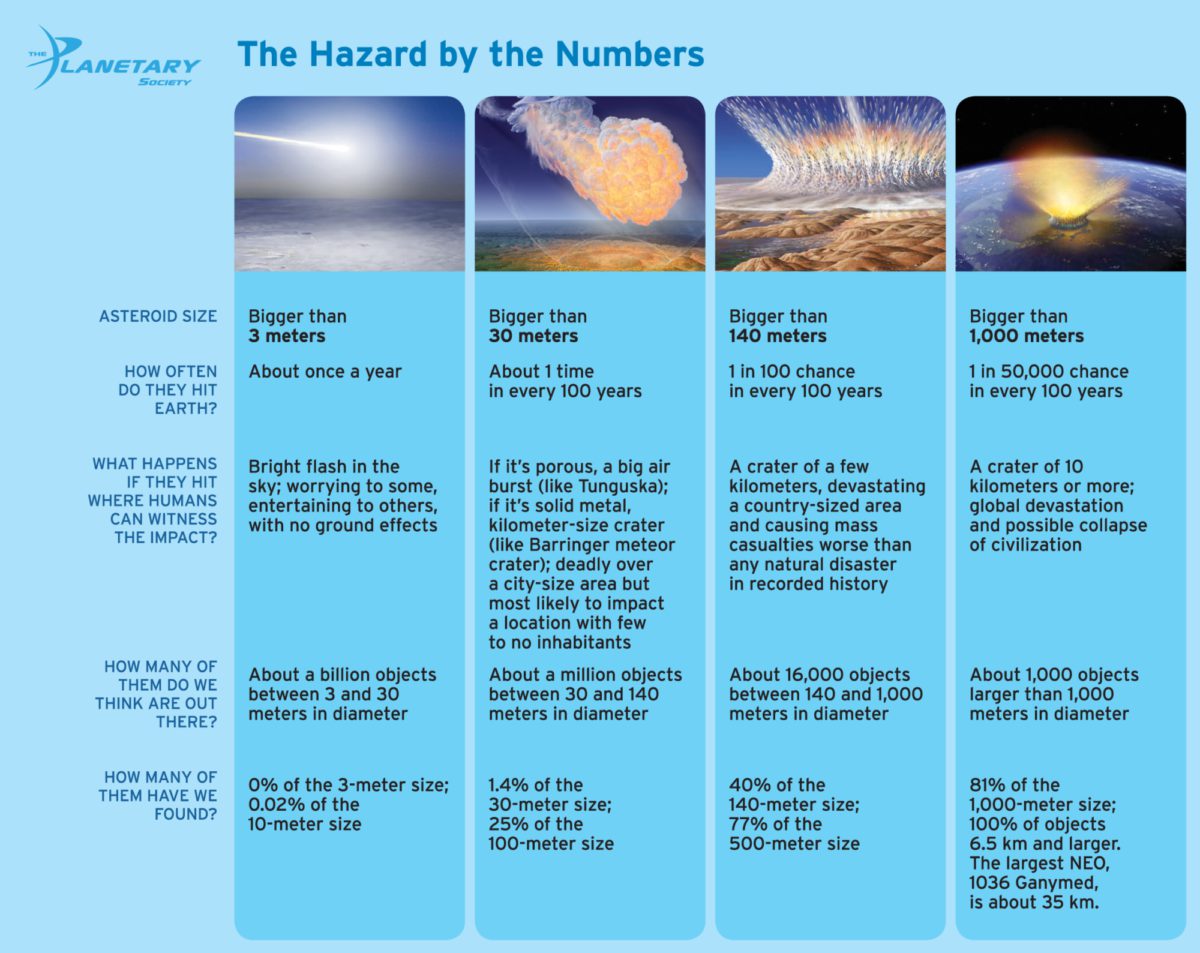
What is asteroid Apophis?
Asteroid Apophis is a near-Earth asteroid at least 350 meters long. It would cause massive regional destruction if it were to hit the Earth. Fortunately that won't happen, although in 2029 Apophis will only miss us by about 30,000 kilometers (19,000 miles), coming closer than our geostationary communications satellites. Learn more about Apophis and how its close approach provides unique opportunities for science and public education.
Are there any asteroids heading for Earth?
There are a few asteroids currently known to have a low probability of hitting Earth in tens to hundreds of years. But these estimates are based on asteroid observations that have some uncertainties in their measurements. Usually, as more observations are obtained, the impact probability will drop to 0; in other words, we know it won’t hit. JPL keeps an online list of all asteroids with any probability of hitting Earth. The big uncertainty is that we haven’t discovered most near-Earth asteroids yet, so we don’t know if any of the undiscovered asteroids are on a collision course with Earth. That is why finding and tracking asteroids is crucial.
Why do asteroids hit Earth?
Space is really empty and big, but there is also a lot of stuff out there. Earth is a big target with strong gravity, so things run into Earth, or Earth runs into them.
Doesn’t Jupiter stop asteroids from hitting Earth?
Because of its gravity, Jupiter helps somewhat lessen the influx of comets from far out in the Solar System, and its orbit and gravity allow some relatively stable orbits in the asteroid belt between Mars and Jupiter. But the effects of Mars’ gravity and Jupiter’s gravity can actually dislodge some asteroids from the inner asteroid belt, and that is where we think most near-Earth asteroids come from.

How are asteroids discovered?
Astronomers use telescopes to look for objects that are moving relative to the stars in the background. They take repeated pictures of a part of the sky over many hours or days. The stars will not move in one picture to the next, but asteroids will, as will planets and comets. Moving objects are compared against where known objects are expected to be. The objects that remain are possible asteroids. Observations of those possible asteroids are submitted to the NASA-funded Minor Planet Center. Other astronomers can then try to confirm the asteroid and start building up enough observations that its orbit can be calculated.

How do we determine if an asteroid will hit Earth?
It’s not enough to find an asteroid. You need to figure out its orbit in order to determine if it is going to hit Earth. To do that, you need to track it: get lots of follow up telescope observations that measure where it is in the sky at different times. These observations are done by talented amateur astronomers around the world as well as professionals. Those observations are submitted to the Minor Planet Center. Groups at Jet Propulsion Laboratory in the U.S. and the NEODyS program in Italy both compute orbits from those observations. The number and quality of the observations will determine the uncertainty in predictions. Sometimes when asteroids come close enough to Earth, radar is used to get more precise distance data that can be used to refine the orbits. Occasionally, spacecraft visit near-Earth asteroids, allowing even more precise orbits to be determined.
Who names asteroids?
When asteroids are discovered, they are initially named with numbers and letters encoding when they were first spotted. For example, 1999 RQ36 gives the discovery year followed by a code that indicates when in the year it was discovered. The Minor Planet Center at the Smithsonian Astrophysical Observatory provides these alphanumeric codes. The asteroid's discoverer can propose to the International Astronomical Union to give the asteroid a formal name. The International Astronomical Union has established rules to guide the selection of names for objects located in different parts of the Solar System and have the final say in approving asteroid names. Only a small percentage of asteroids end up with names. The Planetary Society helped run a contest that named the target of the OSIRIS-REx mission: 1999 RQ36 is now Bennu.
Can I see asteroids?
Depending on their brightness, some asteroids can be seen as points of light with a telescope or binoculars. Pretty much the only asteroid that can be seen with the naked eye is one of the largest asteroid belt asteroids, Vesta, and it requires a dark viewing site. There are also very rare occurrences when a large enough asteroid comes close to Earth. For example, in 2029, the asteroid Apophis will come closer to Earth than geostationary satellites and be visible to unaided eyes for a few hours.
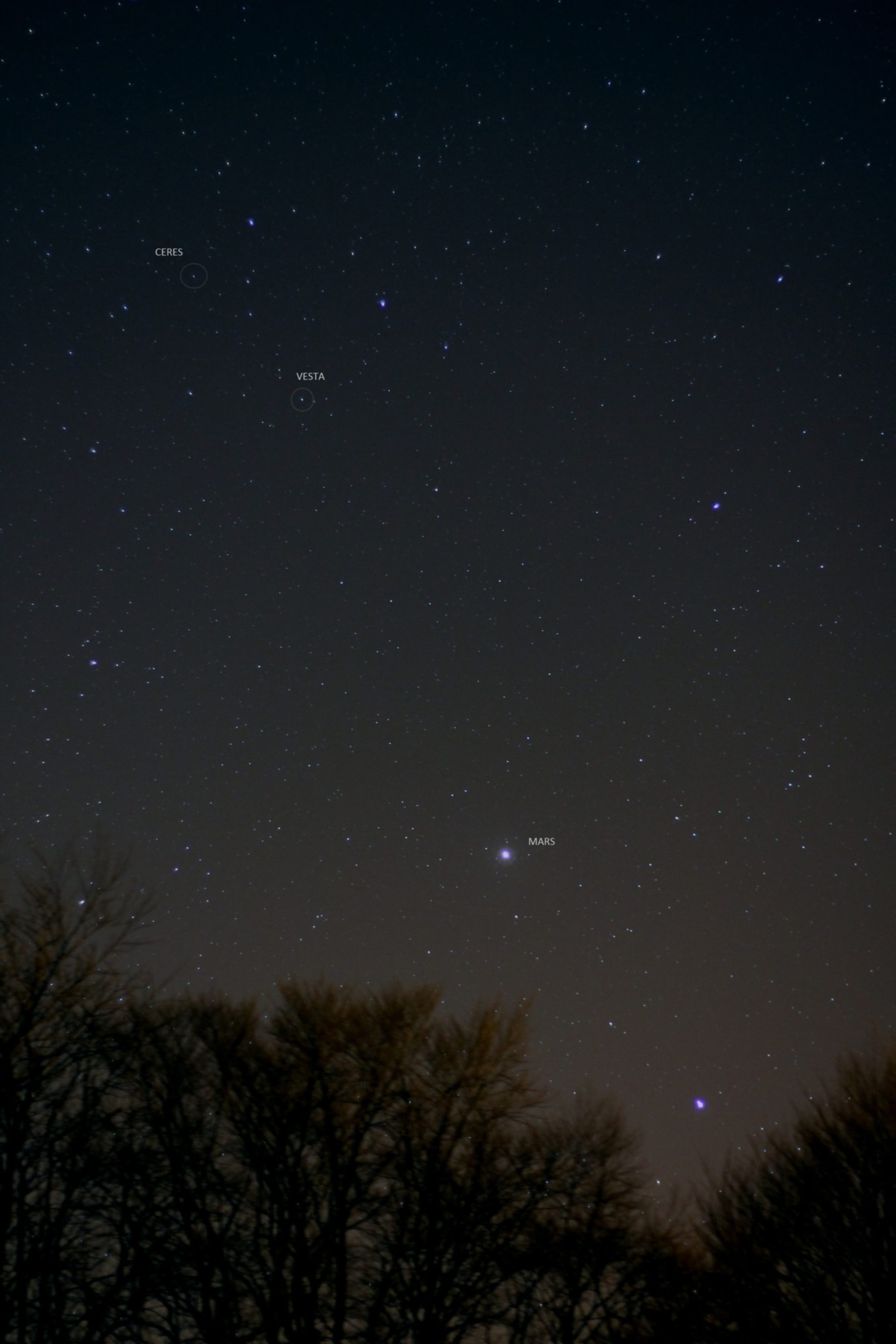
What about the asteroid that killed the dinosaurs?
It was huge! The asteroid that led to the extinction of the dinosaurs and 70% of the species on Earth was 10 to 15 kilometers (6 to 9 miles) in diameter. It hit off of what is now the Yucatan Peninsula of Mexico. The impact is named after a small town closest to the impact center: Chicxulub. The impact not only caused complete regional destruction, but it also ejected dust into the atmosphere that likely resulted in years of reduced sunlight and cooling. Reduced sunlight was probably one of the contributors to global devastation, as plants were starved of sunlight. The impact also would have created megatsunamis and ejected melted rock that could have started widespread fires. The good news for us, the mammals that had a chance to evolve because of that impact, is that we think we have now discovered all similar-sized asteroids, and none are on a collision course with Earth. But we are far from discovering all the asteroids capable of regional or even global disaster.
How many asteroids have hit Earth?
Probably billions, but most of that huge number were in the very early days of the Solar System. We can see a multi-billion year history of impact through craters on old surfaces, like those the Moon. The Earth, on the other hand, has lots of erosion, weathering, and plate tectonics that erase evidence of impact craters over time. About 200 impact craters have been identified on Earth, with another 100 or more possible impact craters. A Planetary Society-funded researcher has found evidence of possible new impact craters in South America.

What would happen if an asteroid hit Earth?
That totally depends on the size and speed of the asteroid. Size varies more than speed and small asteroids hit more frequently. Small asteroids (a few meters) hit frequently and burn up in the atmosphere and do little damage. Chelyabinsk-sized asteroids (~20 meters) create shock waves that shatter windows and cause injuries. Tunguska-sized asteroids (~40 meters) could completely destroy cities or create tsunamis. Larger asteroids that hit less often, on average, could cause regional destruction. Even larger asteroids, which hit even less frequently, could cause global catastrophes.
What is being done to prevent asteroids from hitting Earth?
The asteroid threat is preventable, if we work at it. Various groups, from NASA and ESA to The Planetary Society, are working together to prevent asteroid impacts. But there is still much to be done. The first priority is finding the asteroids that are out there and determining their orbits.
Another important line of research today is asteroid deflection. DART, NASA's Double Asteroid Redirection Test, was the first space mission to test an asteroid deflection technique. DART launched in November 2021 and arrived at near-Earth asteroid Didymos in September 2022. On Sept. 26, the spacecraft intentionally crashed into the asteroid's small moon, Dimorphos. The crash changed the time it takes Dimorphos to orbit Didymos by 33 minutes, proving that the deflection technique using what's called a kinetic impactor works.
Check out The Planetary Society’s full five-step plan to prevent asteroid impacts to learn more about what's being done to prevent asteroids from hitting Earth.
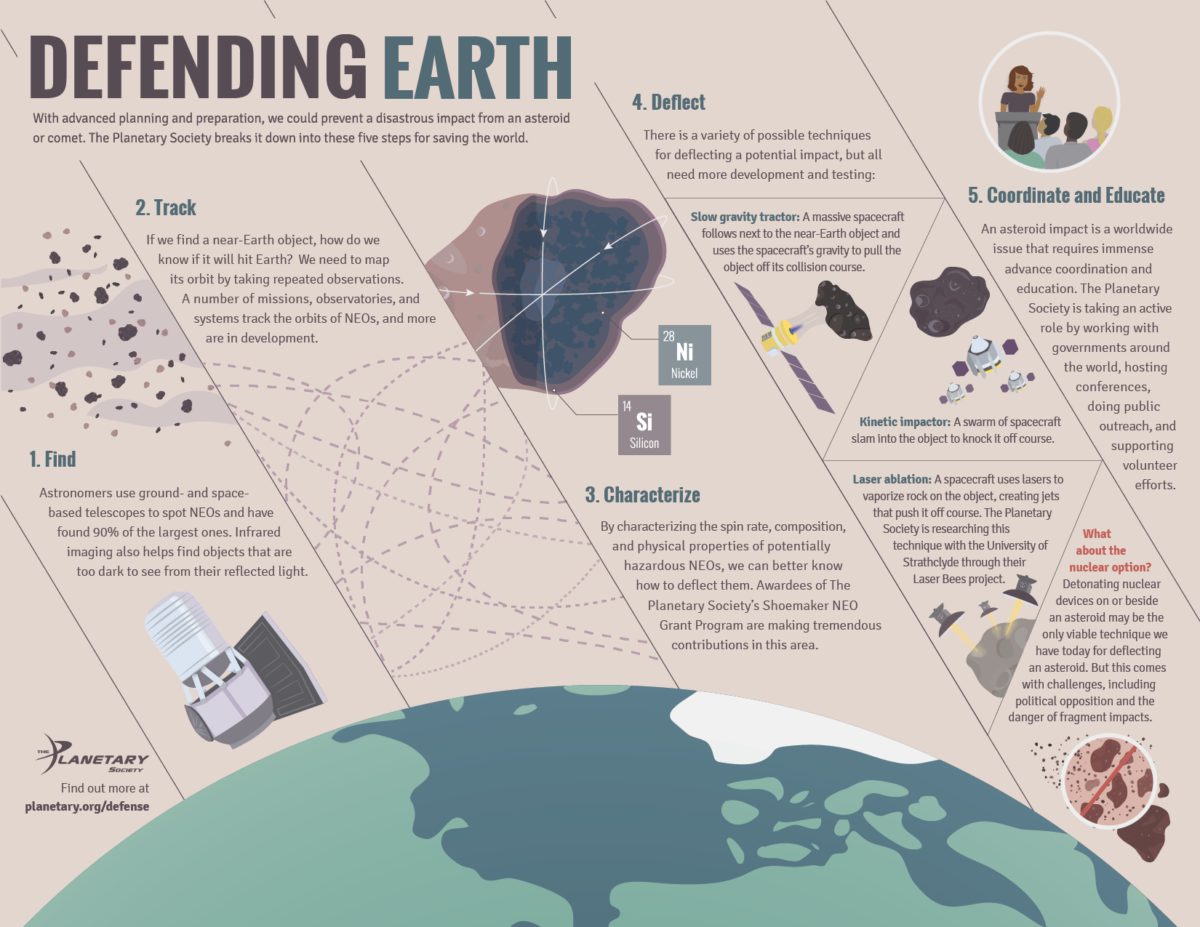
The Planetary Society works to defend our planet by advocating to policymakers, educating the public, and supporting the work of astronomers who find and track near-Earth objects. Join today and help us reduce the risk of dangerous asteroid impacts.
Become A MemberSupport our core enterprises
Your support powers our mission to explore worlds, find life, and defend Earth. You make all the difference when you make a gift. Give today!
Donate

 Explore Worlds
Explore Worlds Find Life
Find Life Defend Earth
Defend Earth


